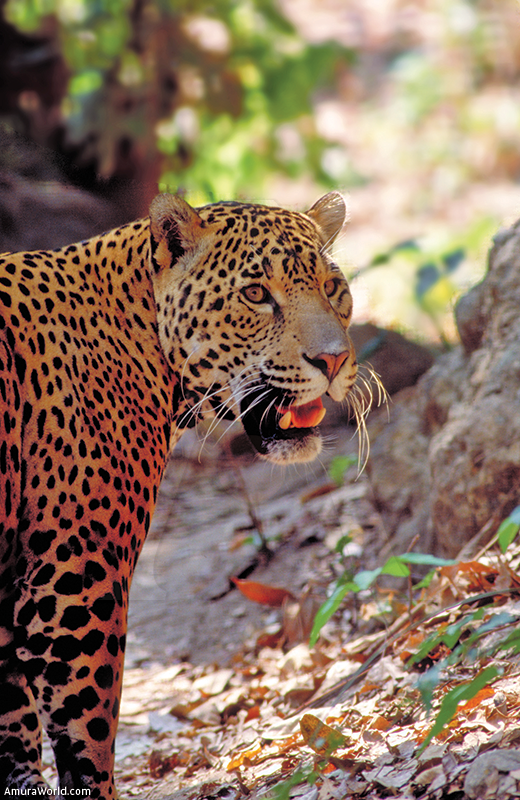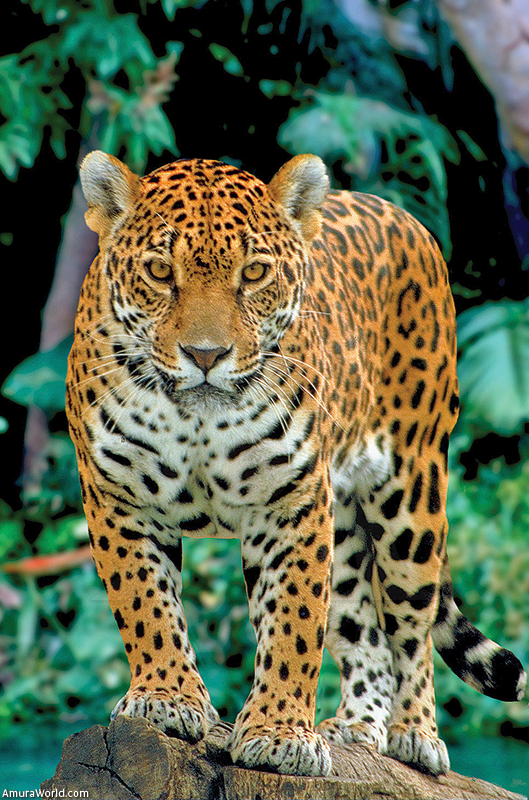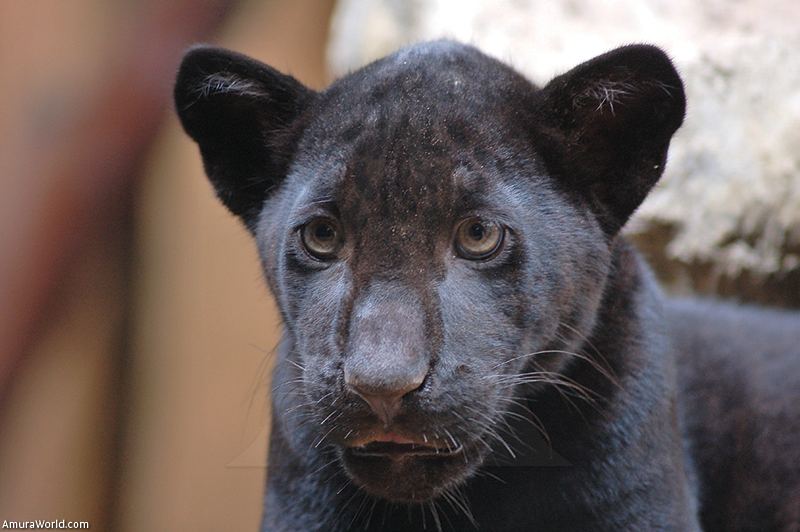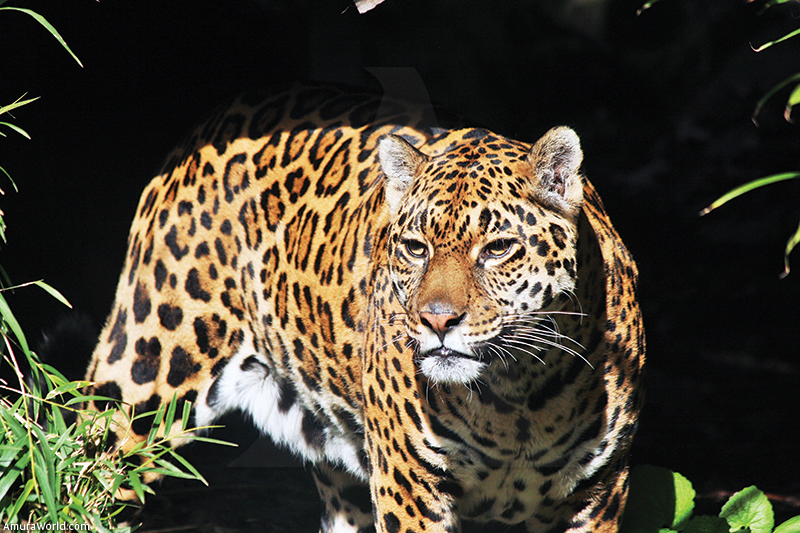{socialbuttons}
Among the most beautiful animals, it is an dangered species
The Jaguar or Yaguar (Phantera Onca) takes its name from a Guarani voice with two possible meanings: “He who kills i one leap” or “Dog body.” A carnivorous mammal belonging to the Felidae family, it is the largest feline found in the Americas. It can surpass 8 feet in length, although the average size of the body ranges from 6 feet long plus tail, which can measure another 2 feet. It weighs between 130 and 150 pounds and males generally are more robust than females.
It has black spots all over its body in the form of rings or rosettes, and unlike the leopard, jaguar rings enclose a small spot and tend to concentrate around the mouth and in the back of its ears. The female is always clearer and has fewer ring spots on neck and back. The leather is spotted with black rings all over. Unlike leopards, jaguars’ ring stains surround a small spot present in higher density around the mouth and back of the ears. Female is lighter in color and lhas fewer spots on neck and back. Melanism –black jaguars- is frequent as well as albinism.
The only habitat unconquered by jaguars is the high mountain.
Their favorite place is the rainforest, especially near water, although they can be found in almost every kind of places such as North and South forests, riparian areas, grassy plains, dry, thorny scrub, deserts and savannahs. The only environment that remains unconquered by the jaguar is the high mountain, where the cougar reigns for it is better adapted.
At some point in the past it densely populated a vast area that goes from southern Arizona to the polar extreme of Argentina. This territory has diminished considerably.
The Jewel Jaguar currently lives in a strange mixture of habitats: south Arizona and north eastern Mexico, where few specimens remain; in a thin strip on the Pacific Mexican coast, the Lacandon jungle and the Yucatan peninsula and in a much bigger region from the Caribean coast down to South America –its territory comprises all the Amazon and more: from the Atlantic coast to the Andes, from Colombia to northern Argentina.
The Jewel Jaguar is considered an endangered species since its population is quite scarce although widely extended. The highest density of specimens is within the Amazon jungle, as is the case too for some of its close relatives such as the American lion. The jaguar is a solitary and territorial animal that lives in pairs only during the mating season, which lasts four to five weeks. Before birth, the male leaves the female; they have the capacity to breed in any season, the gestation period lasts about 100 days and cubs are usually born in litters of two to four.
It eats larger animals such as tapirs, capybaras, deer and peccaries –the largest rodent in the world. The Jaguar is a predator that climbs trees to ambush its preys and kills them with an accurate bite in the throat. Unlike other cats they don’t fear water. In fact they are very good swimmers and get fish and turtles in the rivers. The one contact Jaguars usually avoid is with humans.
The jaguar is among threatened species because it is hunted for its skin or to keep it from causing havoc on the cattle when out of the jungles in search of food. The problem with this carnivore is that many of the forests, their habitat has been destroyed for agriculture or logging, with the consequent extinction of many species cohabiting in these spaces with the jaguar.
Efforts have been made in research and conservation of tropical forests and their inhabitants. As a result, we have managed to maintain and raise the jaguar in captivity to preserve the species.
The Mexican states of Campeche, Chiapas, Tabasco, Yucatán and Quintana Roo have declared as protected areas the Biosphere Reserves of Montes Azules in the Lacandon Jungle, and Sian Ka’an in Quintana Roo. As in other reserves, these are responsible for preserving many endangered species, among which we find this beautiful speckled jewel.
Text: Eduardo Lugo ± Photo: Eduardo Lugo/Wikipedia/apdm






